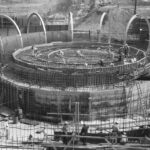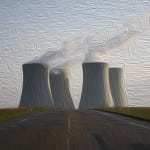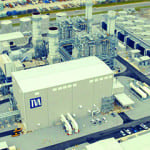The Tennessee Valley Authority (TVA) would be entirely justified in renaming its Browns Ferry Unit 1 nuclear power plant the “Phoenix” power plant. Not for geographic reasons (the plant is located in Alabama, not Arizona). Rather, the name would be an appropriate nod to the mythological Egyptian bird that repeatedly dies in fire and is reborn from ashes to conquer the sky. The 1,200-MW General Electric boiling water reactor powering the unit has twice crashed in ashes—first literally and then figuratively—during its 40-year history, and been reborn. It has earned its title as the ultimate comeback reactor.
What’s old is new again
The latest return of Browns Ferry Unit 1 to service this year results from a massive upgrading and restart of an existing reactor—one that had not run since 1985, when a regulatory shutdown of TVA’s entire five-reactor fleet idled this elderly unit. Over the years, TVA returned the two younger Browns Ferry boilers and the two Sequoyah Westinghouse pressurized water reactor (PWR) units to service. Finally, it commissioned the Watts Bar Unit 1 PWR plant in 1996.
The Watts Bar start-up marked the last commissioning of a new nuclear plant in the U.S., emptying the nuclear construction pipeline that began to dry up in the mid-1970s.
But Browns Ferry Unit 1 (Figure 1) remained in stasis. Not dead, but in a deep administrative coma.
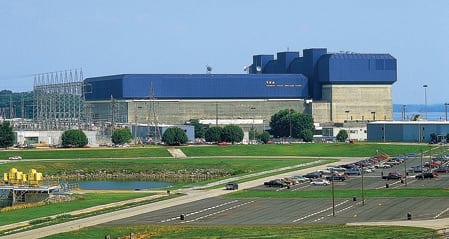
1. Successful restart. Browns Ferry Unit 1 was restarted in May of this year after a five-year, $1.8 billion overhaul. It had been idled since 1985, when it was shut down because of plant management and operations concerns. Courtesy: TVA
In 2002, TVA decided that, given current and anticipated load growth, it needed to get the nuclear unit back in service. Restarting (and massively refurbishing) the aged nuke, the TVA board concluded, was less costly overall than building new generation. Five years and $1.8 billion later, the geriatric plant is up and running again, flexing its upgraded muscles and looking very much like a new unit.
The U.S. nuclear industry, always putting an optimistic face on its long-lasting exile from the generating market, has billed the Browns Ferry restart as the first new nuclear plant of the 21st century. That’s understandable hyperbole, but not entirely accurate. TVA first broke ground on Browns Ferry in 1967. The plant that went back into service in 40 years later in 2007 surely isn’t the same one that started generating electricity in the early 1970s.
Browns Ferry Unit 1 isn’t the first U.S. unit of the 21st century; it’s the last unit of the 20th century—after being one of the first.
Unit 1’s storied history
The history of Browns Ferry Unit 1 illustrates the complexities of nuclear power economics and politics and the futility of making broad futuristic claims based on limited data. That the plant exists at all today is remarkable. It is a testament to the fundamental GE design and the modern management of TVA. It is also a reminder of TVA’s earlier history and its longest-serving, autocratic chief, Aubrey “Red” Wagner, who ran the federal power agency from 1961 to 1978 (Figure 2).

2. Hard charger. Aubrey “Red” Wagner was responsible for transforming TVA from a hydro and coal utility into a nuclear utility. Courtesy: TVA
Nobody in America in the 1960s was more enthusiastic about the promise of nuclear power than Wisconsin farm boy Red Wagner. A civil engineer trained at the University of Wisconsin, he joined TVA in 1934, shortly after its birth at the hands of President Franklin Delano Roosevelt’s political midwifery. Roosevelt, as governor of New York, had previously created the Power Authority of the State of New York, which became the TVA prototype.
A talented engineer, Wagner rose through TVA ranks. In 1961, President John F. Kennedy named Wagner to head the regional power and economic development agency. By 1965, Wagner had concluded that nuclear power was the future of electric generation, particularly for the TVA region. He had moved the TVA system away from the hydropower resources that had formed its generating basis on the Tennessee River toward the plentiful coal resources in the region—a recognition that hydro had just about used up its potential in the region.
But Wagner didn’t want to be vulnerable to volatile coal prices and the possibilities of air pollution control costs. TVA was the largest utility consumer of coal in the 1960s and 1970s. For more than a decade it fought federal air pollution control regulations, arguing that, as a federal government agency, it was exempt from the Clean Air Act governing other generators. Even TVA lawyers didn’t really believe that argument, though they argued it in federal courts. They ultimately lost.
Nuclear reactors promised a generating technology indifferent to fuel prices and with no emissions of sulfur dioxide and oxides of nitrogen; Wagner was sold. A TVA biographer accurately said of Wagner, “He oversaw the construction of the agency’s last dams and its first nuclear reactors.”
Nuclear reactor salesmen regarded Wagner as an easy mark. One of them told me the 1980s, “You could pitch a new nuclear technology at Red and after a hour, he’d say, ‘I’ll take two units.’ ” Indeed, at one point, TVA agreed to buy 17 nuclear units—including boiling water reactors (BWRs), pressurized water reactors, and high-temperature gas-cooled reactors—from five different vendors.
Ultimately, after expenditures of billions of dollars, five units got built: three BWRs, including Browns Ferry Unit 1, and two PWRs at Sequoyah. A final PWR went into service at Watts Bar in 1996. The TVA board voted this year to resume construction on a second Watts Bar unit that’s been mothballed for more than a decade. When Watts Bar Unit 2 is completed, it will supplant Browns Ferry Unit 1 as the final nuclear plant of the 20th century (Figure 3).
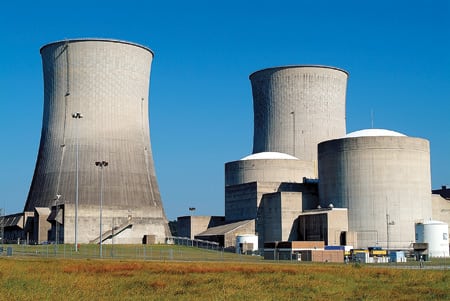
3. Double play. TVA’s board authorized completion of the 1,180-MW Watts Bar Unit 2 on August 1 of this year. Construction of Unit 2 was about 80% complete when work was suspended in the early 1990s. The project is expected to cost $2.49 billion and be finished by 2013. Unit 1 began operating in 1996 and is the last commercial nuclear unit in the U.S. to begin operation. Courtesy: TVA
The last shall be first
Browns Ferry was TVA’s first nuclear unit; the reactor order was placed in 1966. The Atomic Energy Commission—within a decade to be eviscerated by creation of the U.S. Nuclear Regulatory Commission (NRC)—licensed the plant to operate in 1973, near Decatur, Ala., at a place that was historically a well-known ford of the Tennessee River, widely commemorated in folk songs.
In fact, these lines from a traditional Alabama blues tune (author unknown) ring true for the nuclear plant as well: Hard luck poppa standing in the rain/If the world was corn he couldn’t buy grain/Lord Lord got those Brown’s Ferry Blues.
The first Browns Ferry unit entered commercial service on August 1, 1974. It was at that time the world’s largest nuclear power plant. The 1,200-MW GE boiler with a Mark 1 “donut and lightbulb” containment structure was also decidedly state of the art.
The two GE BWRs that followed at the site were also state-of-the-art reactors, with upgraded pressure-suppression containments. Units 2 and 3, as of March 1, 1975, and March 1, 1977, made Browns Ferry by far the largest nuclear power station in the world at the time. (Japan now has the largest nuclear station at Tokyo Electric Power Co.’s Kashiwazaki-Kariwa station. Its seven units produce 8,200 MW of electric power.)
When the first Browns Ferry unit went into service, said a report by the Union of Concerned Scientists, “The few dozen operating nuclear power plants in the U.S. produced barely more energy than the nation derived from firewood.”
Missing fire-stops
Despite its promise and initial quality performance, Browns Ferry Unit 1 had some important safety vulnerabilities that were unanticipated by the industry, the utility, or the newly created NRC. Those were the early days of nuclear regulation, before regulators recognized the full complexities of nuclear generation.
One unforeseen vulnerability was fire. On March 22, 1975, during a plant modification, as Unit 1 was in its seventh month of successful operation and Unit 2 had just begun commercial operation, two workers were trying to detect air leaks where electrical control cables were entering the Unit 1 reactor building. The workers, apparently uninstructed by their supervisors, were using candles to find air leaks where the cables entered the reactor building wall. This was, it turned out, equivalent to using cigarette lighters to find a natural gas leak.
The physical results of holding candles in the nuke weren’t as explosive as attempting to find a gas leak with an open flame, but they were at least as economically catastrophic. The flames ignited polyurethane foam insulation in the cable penetrations. Then the plant literally went up in flames. Unexpectedly, the fire spread quickly and rendered the plant’s major safety equipment useless. The emergency core cooling system, expected to be the chief line of defense in a reactor accident, couldn’t function.
Fortunately, level-headed plant operators were able to use other, manual systems to get the reactor cooling process under control as the plant went out of service. It took a year to repair the damage and bring the plant back to where it could generate power.
The fire quickly fueled the U.S. antinuclear movement, which had been smoldering for some time. Not long after the fire, which made the front pages of the nation’s newspapers and the nightly news broadcasts of the three national television networks, many critics were questioning whether nuclear power was a wise investment.
While conventional wisdom says the March 29, 1979, loss-of-coolant accident and nuclear fuel meltdown at the Three Mile Island (TMI) nuclear plant pulled the trigger on the end of the 1970s nuclear power boom, a more nuanced analysis suggests that it might have been the Browns Ferry fire.
A sign of future growth?
TVA accomplished a major feat in turning a somewhat rudimentary, albeit fundamentally robust, early 1970s nuclear generating plant into a modern machine. It’s 20th to 21st century, analog to digital, primitive to modern. So far, the plant is operating with impeccable performance charactistics, and there’s no reason to suspect it won’t continue to behave well.
Will the return of Browns Ferry Unit 1 last May mark the beginning of the U.S. industry’s long-anticipated renaissance for nuclear power? That’s not yet discernable. The question may not be answerable. The Nuclear Energy Institute (NEI) and other nuclear industry interests clearly have their glowing fingers crossed in hopes that this restart will be the harbinger of more, and much newer, nuclear plants.
Skip Bowman, a retired nuclear Navy admiral, now heads the NEI, the industry’s Washington lobby. (Is it possible to run the NEI without having been a nuclear Navy veteran?) Bowman said in a written statement, “We believe this project will mark the beginning of nuclear energy’s rejuvenation in the United States.” He added the latest talking point of nuclear generation advocates: Nuclear power plants “supply more than 70% of all U.S. electricity that comes from sources that do not emit greenhouse gases or any of the pollutants covered by the Clean Air Act.” However, nukes provide only about 20% of U.S. electricity generation. Coal is still king, and likely to remain so for a long time.
Bucking the trend
The record shows that no nuclear plants ordered in the U.S. after 1974 got built and that there were no new plant orders prior to March 1979, the time of the TMI meltdown. That was probably a function of economics: The U.S. entered at prolonged period of “stagflation,” a combination of low economic growth and high inflation, in the early 1970s. New nukes went into slow-motion death, long before anti-nuke protesters stared marching and complaining. By the late 1970s, nuclear plant builders were taking out construction loans with interest rates in excess of 20% per year in order to finish their plants.
Nor did the U.S. fleet of nuclear reactors have a good operational record. In 1985, under intense political pressure from Congress and the NRC, TVA voluntarily shut down its entire nuclear fleet. In part because TVA was a federal agency and easily subjected to scrutiny, TVA’s plants became the poster fleet for poor nuclear performance and a casual attitude toward safety.
By 1985 new orders had dried up. U.S. plants ran at low levels of reliability and capacity. Operation and maintenance costs were high. The credibility of the nuclear industry was in the radioactive toilet.
That soon changed—under the leadership of Duke Power’s charismatic CEO, the late Bill Lee—following the 1986 Chernobyl nuclear power plant explosion in Ukraine. The industry dedicated itself to improved performance and safety. Under Lee’s prodding, the industry reversed its course, pledging productivity and quality performance at its plants and creating industry institutions to ensure quality.
Over the next decade, the industry delivered. Plant capacity factors increased significantly; scrams (involuntary reactor shutdowns) decreased. The nation’s nuclear fleet became a stellar performer.
That industry reversal led directly to the restart of Browns Ferry Unit 1, as the TVA board accepted the internal criticism and made its decision to restart the long-idled plant and to meet and exceed the industry’s new goals for quality and safety.
The result: another rebirth of Browns Ferry Unit 1. Call it “Phoenix.” F. Scott Fitzgerald was wrong when he said, “There are no second acts in American lives.” Browns Ferry Unit 1 is in its third act, and is looking spry.







